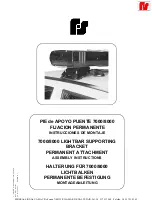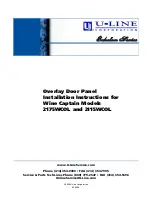
18
7.4 Charging
Each electrical system will have different characteristics and balance-of-system
components. Modifications to charger settings may be required to optimize the
system performance of each.
NOTICE
Always confirm that the charging device is incapable of producing transient spikes
that exceed the published terminal voltage limits for the battery.
NOTICE
Never charge a visibly damaged or frozen battery.
NOTICE
Always confirm the charging curve meets the battery’s charging requirement.
7.4.1 When to Charge the Battery
•
Opportunity charging is OK.
Charging the battery after every use will
not reduce its cycle life.
•
Partial state of charge is OK.
If the battery SOC is greater than 10% at
the end of discharge, it does not require an immediate charge.
•
Charge if below 10% SOC.
If the battery has been discharged below
10% SOC it must be charged within 24 hours to avoid permanent
damage to the battery. Otherwise irreversible damage to the battery
cells will occur in a very short period of time.
•
Low currents extend life.
Charging at 50% of nominal current or lower
helps extend battery cycle life.
•
Proper temperature.
Ensure charging is within the charge temperatures
specified in
Table 2-3
DLB Environmental Specifications
.
NOTICE
The battery must be charged within 24 hours if it has been discharged below 10%
SOC. Otherwise irreversible damage to the battery cells will occur in a very short
period of time and the warranty will be invalid.
NOTICE
Charging the battery when it is below 0°C will cause irreversible damage and
invalidate the warranty.
7.4.2 What to Charge the Battery with
Use a Lithium LiFePO
4
charger.
Use a charger with a dedicated LiFePO4
charging algorithm that matches the DLB charging profile and parameters.
For charging parameters refer to
Table 2-1.
DLB Electrical Specifications
and
Figure 8
DLB Charge Graph
.
Summary of Contents for LITHIUM BLUE DLB-G24-12V
Page 24: ...24 NOTES ...







































